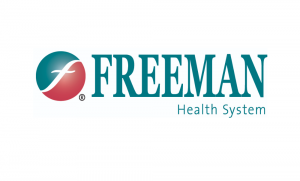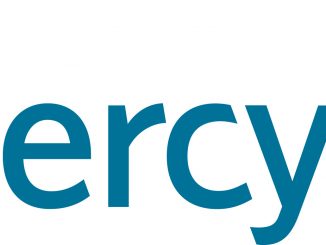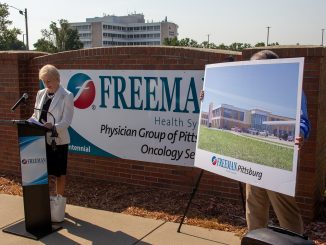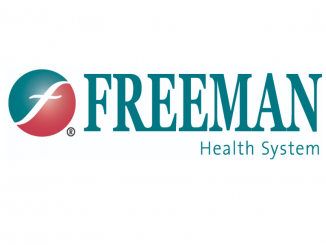
(Joplin, MO) — Comer Parks walks a treadmill for up to forty minutes, three days a week, as part of his cardiac rehabilitation after having a transcatheter aortic valve replacement (TAVR) procedure at Freeman Health System.
“When I woke up from the procedure and got my feet under me, I just went, ‘Wow!’” said Parks. “Before the TAVR, I couldn’t walk 25 yards without stopping and catching my breath. I figured I was on my way out.”
Parks, who had bypass surgery in 2015, revisited his doctor, Interventional Cardiologist Dr. Ryan Longnecker as his fatigue grew worse. Dr. Longnecker determined Parks needed surgery on his aortic valve, but open-heart surgery wasn’t an option with his history. Dr. Longnecker did an echocardiogram on Parks and recommended TAVR.
“Aortic stenosis is a disease we’ve known about several decades,” said Dr. Longnecker. “Traditionally, treatment was an open-heart surgery where we cut open the sternum and put in a new aortic valve. In a TAVR procedure, we go through the vessels in the leg, threading a catheter up into the heart itself, then blowing up a balloon to dilate the valve. Then the stent structure on the balloon stays in place and functions as the new valve. It’s one of the more remarkable technologies where we can put in a new valve and people almost immediately feel better based on dramatically reducing the workload for the heart.”
It’s a complicated and yet fairly, simple procedure that is performed by a team of surgeons while the heart remains pumping, eliminating the need for a heart-lung machine.
Dr. Longnecker was joined by Cardiothoracic Surgeon Dr. Ray Vetsch and Interventional Cardiologist Dr. John Cox to perform Park’s TAVR procedure.
“We do about six of these a month, depending on the schedule,” said Dr. Longnecker. “We have done more than 200 TAVR procedures now and it is a great thing to bring to the community. It is an amazing procedure. With a traditional valve replacement people might be in the hospital seven to ten days recovering – the majority of our patients post TAVR go home the next day.”
“I trust those men with my life anytime,” said Parks. “Dr. Longnecker has been my cardiologist for many years. If he tells me to jump across a ditch, I jump across a ditch.”
“Aortic valve disease is really a silent killer because people modify their life around the disease but aren’t really living because they are having shortness of breath or dizziness,” said Dr. Longnecker. “This is almost like a light switch when we fix that valve, and they have more energy and go through cardiac rehab. It’s not uncommon for them to say they feel like a new person and have a new lease on life. I think it’s remarkable to have this technology.”
About Freeman Health System
Locally owned, not-for-profit and nationally recognized, Freeman Health System includes Freeman Hospital West, Freeman Hospital East, Freeman Neosho Hospital and Ozark Center – the area’s largest provider of behavioral health services – as well as two urgent care clinics, dozens of physician clinics and a variety of specialty services. In 2020, Freeman earned dozens of individual awards for medical excellence and patient safety from CareChex®, a quality rating system that helps consumers evaluate healthcare providers. U.S. News & World Report named Freeman Health System the Best Hospital in Southwest Missouri for 2020. With more than 320 physicians on staff representing more than 80 specialties, Freeman provides cancer care, heart care, neurology and neurosurgery, orthopaedics, children’s services and women’s services. Additionally, Freeman is the only Children’s Miracle Network Hospital in a 70-mile radius. For more information, visit freemanhealth.com.
Reference:
Lisa Olliges, Marketing & Media Relations Coordinator
Freeman Health System
417.434.3458
media@freemanhealth.com








Be the first to comment